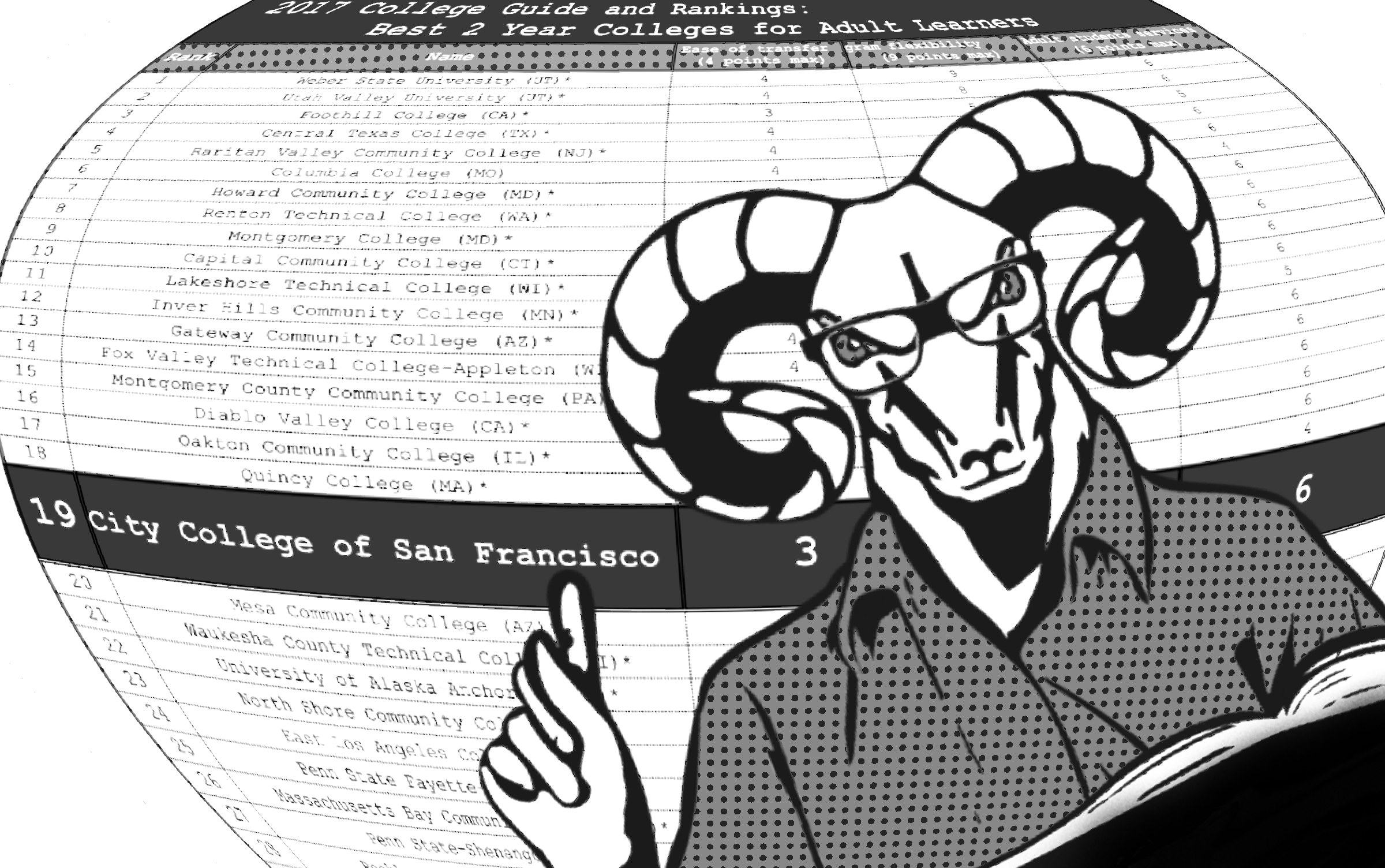City College gets its groove back for adult learners
By Diane Carter
Guess what? City College actually appeared on the list of America’s Best Colleges for Adult Learners (Two Year Colleges). We ranked at nineteen on a list of one hundred colleges with similar demographics.
Eleven years ago, a policy magazine, Washington Monthly presented a new way of ranking the best colleges and universities in the United States.
Instead of using the traditional method to measure best outcomes, the magazine focused its data collection on niche institutions with special kinds of learners.
Where traditional sources of collegiate ranking would collect educational data tending to elevate selectivity, wealth, and prestige as indicators of best academic outcomes, Washington Monthly sought to measure more practical metrics for a variety of educational institutions outside of the four year institutions and liberal arts colleges.
New metrics would measure the college’s’ ability to serve adult learners.
Paul Glastris in his magazine article, “America’s Best Colleges for Adult Learners,” noted that 40 percent of 20.2 million students attending american colleges are twenty-five years old or older and juggle time constraints in order to manage careers, family responsibilities, and upgrade skills.
Adult learners returning to college enhance economic mobility, increase skills needed in the general economy, and advance the number of people with post-secondary knowledge.
To rank the best colleges for adult learners, data from two federal government sources was reviewed. The first source of data was the Department of Education’s Integrated Post-Secondary Educational Data System survey and the other data source was the College Board’s Annual Survey of Colleges.
Categories used to measure America’s best colleges for adult learners included
- Ease of transfer of units from other colleges.
- Flexibility of programs including night courses.
- The percentage of students over twenty-five.
- The cost of tuition and fees.
- Services for Adult Students including part-time child care if available at the college.
- Adult student median earnings rank.
- Loan repayment where a loan had been accepted for tuition.
- Mean earnings of adult students ten years after college.
Commenters on the college ranking website show little faith in the list, “ranking colleges and universities with any degree of accuracy is a fool’s errand, but there are a lot of “fools” on both sides of this “errand” willing to put money toward it”.
The Washington Monthly agrees that college rankings are only as good as the data that form them. Thus they strive to get better data each time they do a new assessment of educational efficiency for any group of students.
To rank a college based on the income a student makes after leaving school is to assume colleges bear responsibility for events that are not under their control, thus using that criteria as a measure of efficient use of taxpayer funding of colleges serving adult learners is, in my opinion, not relevant to assessing the outcome of colleges best for the needs of adults.
City College of San Francisco was placed at number nineteen in a list of one hundred similar colleges where public taxpayer funding to meet the needs of adult learners was relied upon.
The high rating of our college is evidence of our excellence in spite of the fact that the college was hostage to the whims of politics driven by elected officials, especially ACCJC members. The specter of the accreditation crisis affected the campus for five years.
When we celebrate or criticize San Francisco City College during the time frame in which the Washington monthly report was gathered, we are really describing a confluence of individual actions, organizational decisions, and societal trends that converged on the college during the accreditation crisis and undermined its efficiency as a taxpayer funded institution ideal for adult learners.
The data collected during the crisis was atypical because the student enrollment dropped by one-third, state funding was affected, and ACCJC appears to have played a large part in the declining enrollment of new student as well as new adult students.
As we move further away from the pointless losses of the past few years, it is possible that we may rise even higher, in this list in accordance with the underlying excellence and accessibility that make City College not only remarkable but morally estimable in a country where the cost of college makes class mobility a joke for so many.
David Pieper, professor at City College of San Francisco, saw our potential when he quipped, “Take that, Barbara Benol.”
David could see the Phoenix rising from the ashes.
Yes, David, you are absolutely spot on.
You can’t keep a great school like City College of San Francisco down for long! We simply always overcome. So in the next seven years we will be even better.

